 September 18, 2014 John E. Ross, KD8IDJ, Editor
| |||||||||
ARRL Website Unavailable on September 19 Starting at 2000 UTC The ARRL website is scheduled to be offline on Friday, September 19, starting at 2000 UTC. The length of the outage could run for several A "Down for Maintenance" message will appear for the duration of the outage whenever someone attempts to access www.arrl.org. All e-mail functionality will remain online -- only the website will be down for testing. ARRL Simulated Emergency Test Scheduled for October 4-5 Weekend The national ARRL Simulated Emergency Test (SET) is slated for the October 4-5 weekend, although the window for local and regional exercises is September 1 through November 30 each year. All groups conduct their events over the course of 48 hours. The SET is a nationwide exercise in disaster response and emergency
communication, administered by ARRL emergency coordinators and net managers, in which volunteers respond to a mock emergency or disaster, such as an earthquake or hurricane. Members of the Amateur Radio Emergency Service (ARES), the Radio Amateur Civil Emergency Service (RACES), the National Traffic System (NTS), SKYWARN, the ARRL Field Organization, and other groups work together to plan and develop simulated emergency and disaster scenarios, in consultation with the various served agencies that rely on radio amateurs during emergencies. The SET offers volunteer public service communicators the opportunity to focus on their capabilities, strengths, and weaknesses while interacting with NTS nets. It also provides a public demonstration -- to served agencies such as the Red Cross, state and local emergency managers, and the news media -- of the value that Amateur Radio provides. The SET helps radio amateurs gain communication experience using standard procedures and a variety of modes, under simulated disaster-response conditions. Participating groups earn points toward an overall SET score, adding a competitive component to the activity. Results are listed in QST (see pages 71-73 of the July issue of QST for the 2013 SET results). Visit the ARRL Public Service/Field Services page and click on "SET Score Card" for an explanation of how points are earned. Many ARES groups across the country will be participating, and all ARES members are invited to support the national SET and their local ARES group's activity.
During this year's SET, participating ARES/NTS members can earn SET bonus points by participating in the ARRL Centennial QSO Party. See page 78 in the July issue of QST, and page 75 in the September issue of QST for more information on the SET. -- Thanks to the ARES E-Letter High-Value ARRL "Red Badgers" Will Be Out in Force on September 21 The next ARRL "Red Badges on the Air" activity is just days away. On Sunday, September 21 UTC (starting the evening of Saturday, September 20, in US time zones), holders of red ARRL name/call sign badges will be on the air en masse, offering a chance to boost your ARRL Centennial QSO Party total. ARRL officers, elected officials such as Director or Section Manager, as well as Headquarters staffers and volunteers, and other members of the ARRL family will take to the
air in numbers. Contacts with red badge wearers are worth as much as 300 points per contact for working ARRL President Kay Craigie, N3KN. ARRL Membership and Volunteer Programs Manager Dave Patton, NN1N, said he expects many of the 200 or so Red Badgers will be on the air on September 21, along with other ARRL appointees, VEs, and members. "The first Red Badge Day was a huge success but left many operators wanting more. Nine months into ARRL's Centennial year, the Centennial QSO Party and W1AW activations already have proven to be the largest and most active special events in the history of Amateur Radio, with more than 20,000 participants on the air from all continents." The event is considered an activity day, not a contest, and operation is permitted on all bands. Participants can call "CQ ARRL Centennial QSO Party" on phone or "CQ CENT" on CW or digital modes. While the focus is to encourage ARRL red badge holders to hand out Centennial QSO Party points, all activity is welcome, regardless of point value. ARRL members are worth at least one point in the Centennial QSO Party. Participants get credit for each band/mode contact, regardless of point value. ARRL Centennial QSO Party participants can use the leader board to determine how many points they have accumulated. Read more. W1AW Centennial Operations Now in North Carolina, Connecticut. New Mexico, Idaho in the Bullpen The ARRL Centennial W1AW portable operations taking place throughout 2014 from each of the 50 states are now in North Carolina (W1AW/4) and Connecticut (W1AW/1). W1AW operations will transition starting at 0000 UTC on Wednesday, September 24 (the evening of September 23 in US time zones), to New Mexico (W1AW/5) and Idaho (W1AW/7). W1AW has visited each of the 50 states for at least 1 week so far during 2014. By year's end W1AW will have been on the air from every state at least twice, as well as from most US territories.
Working W1AW/x from each state is worth 5 points per mode/contact, even when working the same state during its second week of activity. To earn the "Worked all States with W1AW Award," work W1AW operating portable from all 50 states. (Working W1AW or W100AW in Connecticut does not count for Connecticut. Participants must work W1AW/1 in Connecticut.) A W1AW WAS certificate and plaque will be available. An ARRL Centennial QSO Party leader board shows participants how many points they have accumulated in the Centennial QSO Party and in the W1AW WAS operations. Log in using your Logbook of The World (LoTW) user name and password, and your position will appear at the top of the leader boards. Results are updated daily, based on contacts entered into LoTW. New $21.40 Vanity Call Sign Fee Now in Effect The new Amateur Service vanity call sign regulatory fee of $21.40 became effective on September 11. The FCC released a Report and Order and Further Notice of Proposed Rulemaking (R&O) on August 29, in which it recalculated the fee to $21.40 for the 10-year license term. The $5.30 increase represents the largest vanity fee hike in many years. In the past, new vanity fees did not become effective until 30 days after their publication in The Federal Register, which occurred on September 11.
The vanity call sign regulatory fee is payable when applying for a new vanity call sign or when renewing any vanity call sign designated as "HV" in the FCC's ULS database. As of October 1, 2013, the Commission no longer accepts checks -- including cashier's checks -- for the payment of regulatory fees. All payments must now be made by online ACH payment, online credit card, or via wire transfer. Any other form of payment will be rejected and returned to the applicant. IARU Region 1 General Conference, IARU Administrative Council to Meet in Bulgaria Representatives of the countries comprising IARU Region 1 (Europe, Africa, the Middle East, and Northern Asia) will gather this month for the Region 1 General Conference. The Bulgarian Federation of Radio Amateurs, (BFRA) will host the meeting September 21-26 in Albena on the Black Sea Coast. Regional general conferences are held every 3 years.
General Conference participants will tackle a plethora of papers on a wide variety of Amateur Radio topics -- from administrative to operational and technical. The Radio Society of Great Britain (RSGB) will raise the issue of malicious QRM, especially in the wake of intentional interference to well-publicized DXpeditions that have attracted huge pileups. "It is now time for all Region 1 Member Societies to treat malicious QRM as a major and urgent priority and to take positive action against this form of anarchy that threatens the future of Amateur Radio," the RSGB said in
its paper, "Malicious QRM -- Time for Action." Among other approaches, the RSGB will recommend that member societies use their media outlets to "highlight the self-regulatory ethos of Amateur Radio, to condemn the actions of the malicious QRMers, and to publicize where direct action has been taken." The RSGB also will recommend that Region 1 appoint an Amateur Radio Observation Service (AROS) network. The topic of transnational Amateur Radio remote-controlled operation also will come up for discussion. A recommendation from the Irish Radio Transmitters Society (IRTS) would mandate the incoming Executive Committee to set up a working group of individuals experienced in radio regulatory affairs "to examine the question of transnational remote-controlled operation and to establish under what conditions such operation might be regulated."
IARU Region 1 Youth Coordinator Lisa Leenders, PA2LS, has submitted a proposal to form a Region 1 Youth Working Group, which would be responsible for Youngsters on the Air (YOTA) activities in addition to promoting Amateur Radio youth activities within the region. Leenders will recommend that IARU Region 1 become the "main funder" of a week-long YOTA summer camp, where youngsters take part in Amateur Radio activities. Other presentations that delegates to the IARU Region 1 General Conference will hear include a presentation on CW operating procedure by the Icelandic Radio Amateurs (IRA) -- Iceland's IARU member-society. The IARU Administrative Council will meet September 27-28, following the Region 1 General Conference. Amateur Radio Society of India Wants Less-Burdensome Amateur Radio Licensing Rules The Amateur Radio Society of India (ARSI) -- India's International Amateur Radio Union (IARU) member-society -- is continuing an effort to make it easier to obtain an Amateur Radio license in that country, where excessive red tape is an accepted reality when dealing with government agencies. The latest attempt came in an August 19 letter from ARSI President Gopal Madhavan, VU2GMN, to Ravi Shankar Prasad, who heads the Ministry of Communications and Information Technology.
Such "inordinate delays" in receiving a license after passing the examination can cause applicants to simply lose interest, said Madhavan, who is also IARU Region 3 chairman. "[G]enuine aspirants to Amateur Radio are denied licenses for months, year, and sometimes forever, as the papers are lost," he said. In his letter, Madhavan took pains to spell out Amateur Radio's public service role in past disasters and emergencies, such as the Indian Ocean tsunami, the September 11, 2001, terrorist attacks, and the Latur and Gujarat earthquakes. Amateur Radio also contributes in terms of technical training, experimentation, and communication, he said.
The Department of Telecommunications within Prasad's ministry issues Amateur Radio licenses. The Indian government has suggested that ham radio technology may fall into hands of terrorists and has begun requiring a security clearance. Madhavan pointed out that the security clearance requirement is not listed in India's Amateur Radio regulations, and he called it "totally irrelevant" at a time when many other means of communication are available. "Every country has serious concerns about security, but they have not found it necessary to vet aspirants to Amateur Radio as is done only in India," he wrote. In most countries, he noted, applicants can obtain a license within a week of passing the required exam and paying any necessary fees. Madhavan requested Prasad's "intervention and coordination" with the Ministry of Home Affairs to help ease the process of issuing a new amateur license and to grow India's Amateur Radio population, which currently stands at some 17,000 in a country of more than 1.2 billion people. Read more. Rare Eritrea (E3) on the Air for Short Time Zorro Miyazawa, JH1AJT, is on the air until September 22 from Eritrea as E30FB, at present running 100 W to a vertical antenna on 20 and This is not a DXpedition. Miyazawa is in Eritrea as part of an official Japanese delegation. He plans to operate as his schedule permits. Additional gear has arrived, but he is still missing the shipment containing an amplifier. He does not have Internet access, and logs will be uploaded when he returns to Japan. Once a part of Ethiopia, Eritrea is a small country on the Horn of Africa that is home to some 6.2 million people. -- Thanks to Jay Oka, JA1TRC Moon-Bound Ham Radio Payload Will Transmit Earthly Messages from Space The Amateur Radio payload on the lunar-orbiting 4M-LXS spacecraft is set to carry up to 2500 brief digital messages into space for retransmission via JT65B mode on 145.990 MHz. China recently announced plans to launch the orbiter carrying the 14 kg battery-powered payload, developed by LUXspace in Luxembourg. The International Amateur Radio Union (IARU) is a partner in the experiment. Getting a message into space required registering and uploading one via the 4M website. A "73 de W1AW" message was among those uploaded before the message collection site closed on September 17. While the window was open, the site gathered messages of up to 13 characters -- the maximum for JT65 transmissions -- to transmit "from the moon," the 4M Manfred Memorial Moon Mission website said.
Signals from the Amateur Radio payload can be decoded using the free WSJT software by Joe Taylor, K1JT. The Manfred Memorial Moon Mission memorializes Manfred Fuchs, the late founder and chairman of LUXspace parent company OHB of Bremen. He died in April. The 4M mission is expected to launch sometime after 1800 UTC on October 23. According to LUXspace, the 4M spacecraft will transmit continuously on 145.980 MHz (± 2.9 kHz) at 1.5 W into a simple quarter-wave monopole antenna. "This will give S/N comparable to EME signals at Earth's surface," LUXspace said. "The transmission is based on a 1-minute sequence and a 5-minute cycle. The transmission will start 4670 seconds (77.8 minutes) after launch." The 4M mission was detailed during a presentation the EME 2014 conference held recently in France. A paper, "4M Mission: A Lunar Flyby Experiment" also is available. During the lunar flyby, the spacecraft will be about nearly 248,000 miles from Earth and between 7440 and 14,480 miles from the Moon. The spacecraft will be part of the last stage of the lunar mission. The planned trajectory calls for a lunar flyby and return to Earth, with a 90 percent chance that the spacecraft will re-enter Earth's atmosphere. LUXspace has provided a tracking tool on its website. Read more. -- Thanks to LUXspace, AMSAT-UK Qatari Es'hail 2 Satellite will Include AMSAT-DL Phase 4 Amateur Radio Transponders Gunter's Space Page has reported that the Es'hail 2 communications satellite will carry analog and digital Amateur Radio transponders. The new satellite, which will be operated by Es'hailSat, the Qatar Satellite Company, will be in a geostationary orbit, positioned at the 26° East "hotspot" position for TV broadcasting to the Middle East and North Africa. Launch is planned for late 2016.
The Qatar Amateur Radio Society and Qatar Satellite Company are cooperating on the Amateur Radio project. AMSAT-DL is providing technical support. -- Thanks to Gunter's Space Page via AMSAT News Service AMSAT-NA Announces Board of Directors Election Results AMSAT-NA has announced the results of its recent Board of Directors election. Tom Clark, K3IO; JoAnne Maenpaa, K9JKM; and Lou Jerry Buxton, N0JY, will serve the remaining year on the term of the late Tony Monteiro, AA2TX. The First Alternate is Drew Glasbrenner, KO4MA, and the Second Alternate is Frank Griffin, K4FEG. Read more. Colorado ARES Team Wins an Honorable Mention in Citizen Corps Awards The Boulder County (Colorado) ARES team (BCARES) received an honorable mention in the Citizen Corps 2014 Individual and Community Preparedness Awards. The Federal Emergency Management Agency (FEMA) announced its list of nationwide award recipients on September 3.
BCARES was cited under the Technical Innovation category for its use of Amateur TV and APRS and for its Mountain Emergency Radio Network (MERN) project during its response to the 2013 flooding in the Boulder area. MERN was created in conjunction with BCARES, the Inter-Mountain Alliance (IMA), and the Boulder County Office of Emergency Management. The goal of the system is to facilitate community emergency preparedness and insure uninterrupted communication between and within six mountain communities in Western Boulder County, county emergency services, and their resources prior to and during an emergency via an Amateur Radio network. FEMA is planning an award presentation. -- Thanks to ARRL Colorado Section Manager Jack Ciaccia, WM0G "Last Man Standing" Special Event Set for September 28 A Hollywood-style Amateur Radio special event is set for later this month from the so-called "Seinfeld Stage" on the CBS Studio Center lot in Studio City, California. The K6H "Hollywood Hamnado" special event station will be on HF and D-STAR on September 28, from 1400 until 2200 UTC. Hosts for the event will be Amateur Radio crew members of the ABC television series "Last Man Standing." On the show, actor Tim Allen plays Mike Baxter, KA0XTT. The show's producer is John Amodeo, NN6JA
Operation will take place on 10, 20, and 40 meters on HF and D-STAR reflector 12A. Rob Antonacci, AA6RA, said K6H is planning to run three SSB stations, operating on or around 28.420, 14.250, and 7.260 MHz. The PAPA website, the W5KUB chat room, and the Mike Baxter KA0XTT Facebook page will provide up-to-the-minute updates. K6H also will use the Disney Amateur Radio Interconnect to link the WB6AJE repeater in Los Angeles to Disney/ABC-sponsored repeaters in Manhattan-Bristol, Connecticut; Washington, DC, and Orlando, Florida. Various IRLP and EchoLink nodes will be available. Those contacting K6H will receive a limited-edition QSL card. Tom Medlin, W5KUB, will be on Stage 9 to interview the participants and report on the special event activity. The PAPA website will stream video directly from the operating stations. So far, 26 members of the "Last Man Standing" crew have been inspired by the show's Amateur Radio component to get licensed. -- Thanks to Rob Antonacci, AA6RA No Easy Answers for RadioShack's Slow, Downward Slide Back in the day, RadioShack employees would answer the phone by saying, "You've got questions, we've got answers." But RadioShack now seems stumped, and the "B" word is looming ever larger as the retailer -- once the go-to place for electronic components and, at one point, even some Amateur Radio gear and shortwave receivers -- casts about for a white knight. Last March, in the wake of a substantial drop in holiday sales and a big fourth-quarter loss, the Fort Worth, Texas-based RadioShack announced plans to close 1100 of its outlets, leaving the chain with 4000 stores, including more than 900 dealer franchises. The company's second-quarter 2014 report has been deemed "dismal" by investment advisors.
RadioShack CEO Joseph Magnacca said in a statement on September 11 that while the company was making progress in its turn-around efforts, "we are actively exploring options for overhauling our balance sheet and are in advanced discussions with a number of parties." A filing the retailer submitted to the Securities and Exchange Commission (SEC) this week was far more blunt. In short, it said that if RadioShack cannot sell the firm, partner with another company, or restructure its debt, "we may not have enough cash and working capital to fund our operations beyond the very near term, which raises substantial doubt about our ability to continue as a going concern." And if Plan A does not work out, the retailer told the SEC, "we would likely be required to liquidate under Chapter 7 of the Bankruptcy Code." Read more. A Century of Amateur Radio and the ARRL In March 1980, Mount St Helens spectacularly exploded. Before the explosion, radio amateurs had been assisting with communication among a number of sites where ongoing measurements were being taken, because scientists had concluded that the mountain was nearing the point of eruption. The hams continued to work after the volcano's several eruptions, with both emergency communications and a continuation of their previous support work. Sadly, two of those hams lost their lives during the disaster -- W6TQF and KA7AMF. By the 1980s, some towns and neighborhoods had begun to impose very restrictive rules about antennas and towers -- rules that would prohibit effective amateur antennas. Many of these cases were fought through the legal system successfully by the affected hams. As with so many issues that involve many hams all over the country, ARRL joined the fight, providing legal assistance through the League's general counsel and volunteer counselors who were also hams.
The ARRL introduced a new periodical in December 1981 -- QEX. Its purposes were (1) to publish articles that documented advanced technical work in areas that were not of wide general interest, and (2) to act as a catalyst for technical development in the Amateur Radio and Amateur-Satellite Services. On May 21, 1981, at the request of the ARRL, the FCC restored 160 meters to exclusive Amateur Radio use. Before this, the FCC rules included an array of restrictions on 160 meter operation, to protect the LORAN (Long-Range Aid to Navigation) system. Now, hams could run a full kilowatt on 160, day and night, anywhere in the country! In the 1980s, packet radio and packet repeaters -- digipeaters -- came into being. Numerous QST articles detailed this mode of operation, helping interested hams to get up and running on packet. In 1982, cable TV systems expanded across the US, bringing with them the potential for CATVI -- cable TVI. Some cable channels were on 2 meter amateur frequencies, and because many poorly installed and maintained cable systems "leaked" TV signals, causing interference on the 2 meter band. Of course, if signals could leak out, other signals could leak in, and hams sometimes caused interference when their signals got into the cable TV system. Cable companies often blamed the problem on hams, rather than take the blame for their poor equipment and maintenance. In the meantime, the FCC was in a fiscal crisis, because of budget cutbacks. Although it was willing to enforce the regulations and bring the cable companies in line, it was unable to fund that enforcement effort. This problem continued for some time before it was corrected. During the 1980s, the SKYWARN system was established and became affiliated with the National Weather Service, so hams could report dangerous weather events that they saw. To this day, SKYWARN members have proven extremely valuable for monitoring weather conditions and providing "ground truth" reports to the NWS. Much SKYWARN communication occurs via 2 meter repeaters.
On the afternoon of January 13, 1982, Air Florida Flight 90 took off from Washington National Airport. But the Boeing 737 slowly settled toward Earth, clipping the 14th Street Bridge (I-395) and destroying seven cars that were on it, before crash landing in the ice-covered Potomac River. The area's ARES operators and nets sprang into immediate action and provided much-needed communication support among the various governmental agencies that had responded. -- Al Brogdon, W1AB The K7RA Solar Update Tad Cook, K7RA, Seattle, On September 11 and 12 two powerful coronal mass ejections (CMEs) hit Earth, producing a G3-class geomagnetic storm. The result was a planetary A index of 44 on September 12, and during the final 3 hours of the day (UTC), the planetary K index reached a very lofty 7! Overall solar activity is down, with the average daily sunspot number declining from 152 to 124.9 in the September 11-17 period. Average daily solar flux dropped from 155.8 to 139.8.
Predicted solar flux is 125 on September 18-19, 120 on September 20, 115 on September 21-22, 110 on September 23-25, 115 on September 26, 120 on September 27-28, 130 on September 29, 135 on September 30 and October 1, 140 on October 2, 145 on October 3-5, and 150 on October 6-7. Predicted planetary A index is 5 on September 18-25, 15 on September 26-27, 12 on September 28-29, 10 on September 30, 5 on October 1-2, 8 on October 3-4, 5 on October 5, and 10 on October 6-7. The autumnal equinox occurs on September 23 at 0229 UTC, Monday evening in North America. The equinox portends improved worldwide communication on the HF bands. As an example, modeling propagation using W6ELprop and a modest solar flux of 120, 20 meter signals between California and Japan on the equinox run about 6 dB hotter in the early evening on the West Coast than they would have a month earlier. This weekly "Solar Update" in The ARRL Letter is a preview of the "Propagation Bulletin" issued each Friday. The latest bulletin and an archive of past propagation bulletins is on the ARRL website. In Friday's bulletin look for an updated forecast and reports from readers, including a report of aurora seen in Arizona. Send me your reports and observations. Just Ahead in Radiosport
See the ARRL Contest Calendar for more information. Upcoming ARRL Section, State and Division Conventions and Events
Find conventions and hamfests in your area. ARRL -- Your One-Stop Resource for
Subscribe to...
Free of charge to ARRL members...
| |||||||||
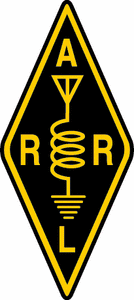 hours and possibly into Saturday, September 20. The ARRL IT Department will be performing maintenance in the process of testing and, if feasible, switching the site to a new server.
hours and possibly into Saturday, September 20. The ARRL IT Department will be performing maintenance in the process of testing and, if feasible, switching the site to a new server.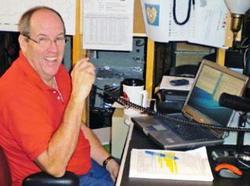
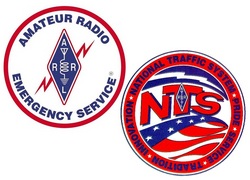 During the October 4-5 SET weekend, ARES and NTS field members and appointees are encouraged to get on the air and call "CQ Centennial." The exchange is signal report, name, location, and your designator. There will be a special bonus for groups that include Centennial QSO Party participation. Each station making at least 5 contacts is worth an additional 3 points toward your group's SET score. Those taking part in a SET on another weekend may participate on the national SET weekend and count it later (or submit an amended SET report form).
During the October 4-5 SET weekend, ARES and NTS field members and appointees are encouraged to get on the air and call "CQ Centennial." The exchange is signal report, name, location, and your designator. There will be a special bonus for groups that include Centennial QSO Party participation. Each station making at least 5 contacts is worth an additional 3 points toward your group's SET score. Those taking part in a SET on another weekend may participate on the national SET weekend and count it later (or submit an amended SET report form)..jpg)
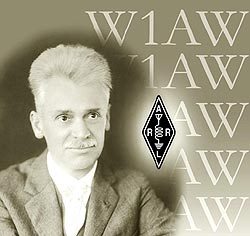 The
The 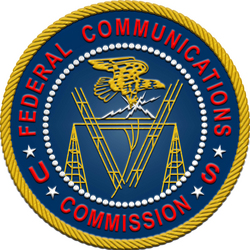 The FCC reported there were 11,500 "payment units" in FY 2014, and that the vanity program generated an estimated $230,230 in FY 2013 revenue. The Commission estimated that it would collect nearly $246,100 in FY 2014 vanity call sign fees.
The FCC reported there were 11,500 "payment units" in FY 2014, and that the vanity program generated an estimated $230,230 in FY 2013 revenue. The Commission estimated that it would collect nearly $246,100 in FY 2014 vanity call sign fees.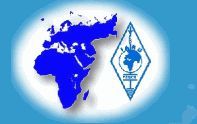 "At General Conferences IARU Region 1 makes major decisions on the future of Amateur Radio and determines the way ahead with administrative, operational, technical, and financial matters," Region 1 Chairman Hans Blondeel Timmerman, PB2T, explained. Conference delegates will elect the Executive Committee as well as working group chairmen, and coordinators.
"At General Conferences IARU Region 1 makes major decisions on the future of Amateur Radio and determines the way ahead with administrative, operational, technical, and financial matters," Region 1 Chairman Hans Blondeel Timmerman, PB2T, explained. Conference delegates will elect the Executive Committee as well as working group chairmen, and coordinators.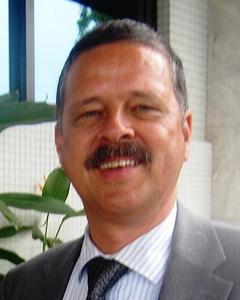

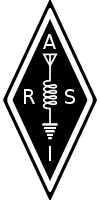 "In India we are hampered by some very archaic rules, which were possibly formulated during the British [colonial] times, when everything was done to restrict radio licenses being given to Indians," Madhavan wrote. "The most restrictive and time-consuming aspect is the 'security clearance' that is being done before a license is granted," he continued. "In most cases, this takes months or even years, and often the paperwork is totally lost in transit between the various agencies."
"In India we are hampered by some very archaic rules, which were possibly formulated during the British [colonial] times, when everything was done to restrict radio licenses being given to Indians," Madhavan wrote. "The most restrictive and time-consuming aspect is the 'security clearance' that is being done before a license is granted," he continued. "In most cases, this takes months or even years, and often the paperwork is totally lost in transit between the various agencies.".jpg)
 15 meters, SSB. Eritrea now stands at number 17 (mixed) on ClubLog's
15 meters, SSB. Eritrea now stands at number 17 (mixed) on ClubLog's 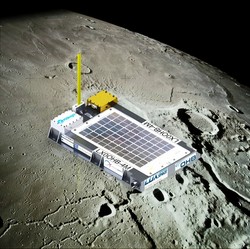
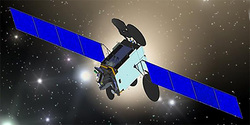 Es'hail 2 will provide the first Amateur Radio geostationary communication capability linking Brazil and India. It will carry two AMSAT-DL-designed Phase 4 Amateur Radio transponders, consisting of a 250 kHz linear analog transponder and an experimental digital modulation transponder with an 8 MHz bandwidth. Uplinks will be in the 2.400-2.450 GHz range, with downlinks in the 10.450-10.500 GHz Amateur-Satellite Service allocation. Both transponders will be equipped with antennas capable of providing full coverage over about one-third of Earth's surface.
Es'hail 2 will provide the first Amateur Radio geostationary communication capability linking Brazil and India. It will carry two AMSAT-DL-designed Phase 4 Amateur Radio transponders, consisting of a 250 kHz linear analog transponder and an experimental digital modulation transponder with an 8 MHz bandwidth. Uplinks will be in the 2.400-2.450 GHz range, with downlinks in the 10.450-10.500 GHz Amateur-Satellite Service allocation. Both transponders will be equipped with antennas capable of providing full coverage over about one-third of Earth's surface.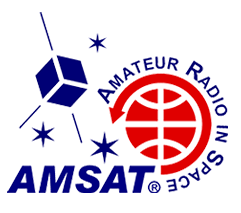 McFadin, W5DID, were elected to serve 2-year terms.
McFadin, W5DID, were elected to serve 2-year terms.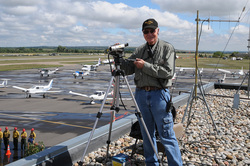
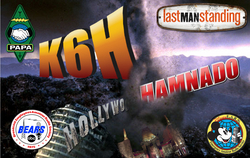 The Southern California-based PAPA Repeater System, in association with the Broadcast Employees Amateur Radio Society (BEARS) and Disney Emergency Amateur Radio Service (DEARS) are sponsoring the special event.
The Southern California-based PAPA Repeater System, in association with the Broadcast Employees Amateur Radio Society (BEARS) and Disney Emergency Amateur Radio Service (DEARS) are sponsoring the special event..jpg) According to
According to 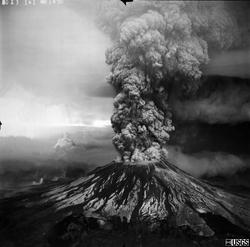
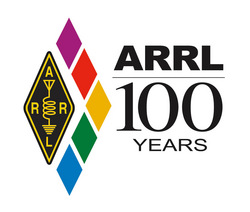 Harry Dannals, W2HD, had been ARRL President for 10 years when he decided to step down in 1982. At the same time, ARRL Secretary and General Manager Richard Baldwin, W1RU, retired. At their first 1982 meeting, the ARRL Board of Directors elected Vic Clark, W4KFC, as the League's new president, and David Sumner, K1ZZ, as the new Secretary and General Manager.
Harry Dannals, W2HD, had been ARRL President for 10 years when he decided to step down in 1982. At the same time, ARRL Secretary and General Manager Richard Baldwin, W1RU, retired. At their first 1982 meeting, the ARRL Board of Directors elected Vic Clark, W4KFC, as the League's new president, and David Sumner, K1ZZ, as the new Secretary and General Manager.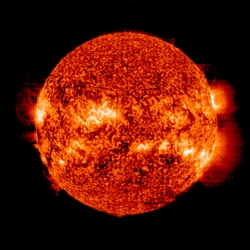 Predicted flux values have declined as well. As an example, the daily 45-day forecast for solar flux on September 21 was 120 on August 6-10, 125 on August 11-17, 135 on August 18 through September 7, 150 on September 8-12, 130 on September 13, 120 on September 14-15, and 115 on every day since.
Predicted flux values have declined as well. As an example, the daily 45-day forecast for solar flux on September 21 was 120 on August 6-10, 125 on August 11-17, 135 on August 18 through September 7, 150 on September 8-12, 130 on September 13, 120 on September 14-15, and 115 on every day since.







